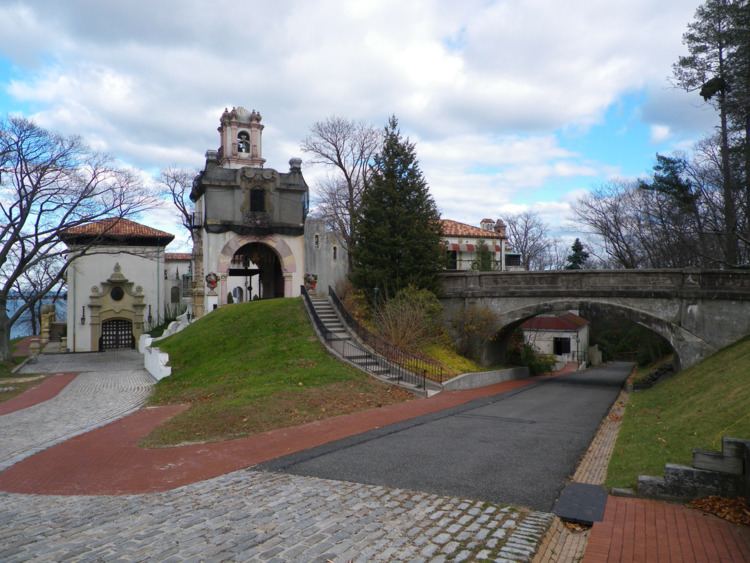Architect Warren & Wetmore MPS Huntington Town MRA Area 17 ha Added to NRHP 26 September 1985 | Architectural style Spanish Baroque NRHP Reference # 85002545 Phone +1 631-854-5579 | |
 | ||
Address 180 Little Neck Rd, Centerport, NY 11721, USA Hours Open today · 12–4PM, 7:30–11PMSaturday12–4PM, 7:30–11PMSunday12–4PMMondayClosedTuesday12–4PMWednesdayClosedThursdayClosedFriday7:30–11PMSuggest an edit Similar Heckscher Museum of Art, Old Westbury Gardens, Vanderbilt Mansion National, Saga Hill, Planting Fields Arboretu Profiles | ||
The Suffolk County Vanderbilt Museum is located in Centerport on the North Shore of Long Island in Suffolk County, New York, USA. Named for William K. Vanderbilt II (1878–1944), it is located on his former 43-acre (17 ha) estate, Eagle's Nest.
Contents
- Destination long island vanderbilt museum mansion and planetarium
- History
- Struggles at the museum
- Living tours
- Planetarium
- References
Destination long island vanderbilt museum mansion and planetarium
History
Vanderbilt's will provided for donation of his property to the county, with provision that the mansion and grounds be used for a museum for his marine, natural history, and ethnographic collections; the natural history institution was established during 1950. Developing a museum that interprets Vanderbilt's life, times, and collections, the county constructed a planetarium on the grounds during 1970.
William Vanderbilt’s enclave was constructed in three installments. The first project was the building of a 24-room Spanish revival mansion designed by famed New York architecture firm Warren and Wetmore, the same architects responsible for designing and constructing New York’s Grand Central Terminal, another product of the Vanderbilt family execution. The duration of the three stages lasted from 1910 to 1936, an impressive amount of time.
The museum complex, operated by Suffolk County, includes the mansion with furnishings and fine art, a marine museum with marine and natural history specimens (butterflies, birds, shells, mammals and fish), a curator's cottage, a seaplane hangar, a boathouse, gardens, and a collection of ethnographic objects (firearms and swords, ship models, and European, Asian and African objects). The museum was listed on the National Register of Historic Places on September 26, 1985.
Struggles at the museum
There has been a tumultuous relationship between the parties who own and the parties who oversee and run the museum. Currently, Suffolk County officials are experiencing difficulty receiving and allocating funds to keep the museum running. The museum’s endowment from previous occupant, William Vanderbilt, was tied up in stock and bonds, which as a result of the economy proved to be a less than desirable financial safety net. It has been noted that the museum sometimes did not have money for payroll.
Living tours
The Vanderbilt Museum crafts together an extraordinary tour. To captivate visitors, the staff once a week does a "living tour" of the museum. By amassing information from historical archives about the previous owners and workers, and making use of Mr. Vanderbilt’s personal journal, the staff delivers a performance. The staff guides people through the home and estate in costume recreating the drama and excitement of the young, wealthy shipping magnate who reigned supreme during the era of the Gold Coast socialites.
Planetarium
Despite rumors circulating for years that the Vanderbilt Museum is experiencing financial duress, many new additions and renovations have been done. Mark Levine, director of the planetarium and associate professor of astronomy at Hofstra University, spoke of when the museum first opened the planetarium to the public in 1971 that "...[it] was the forerunner, the prototype of so many others that were subsequently built around this country.” He hoped to eradicate the lackluster image that the museum’s planetarium has acquired over the years by making use of the newest technologies and upgrades.
The planetarium reopened after a major renovation in 2013. The planetarium includes a Konica Minolta GeminiStar III projector; one of the finer planetarium projectors in the United States. The machine features a full dome display projector and state of the art surround sound technology. To complement the technological enhancements, the exterior and interiors have been upgraded. The planetarium has new carpets and ergonomically designed seats. The gift shop, lobby, ticket office received upgrades and renovations as well. The facility’s building was re-roofed.
